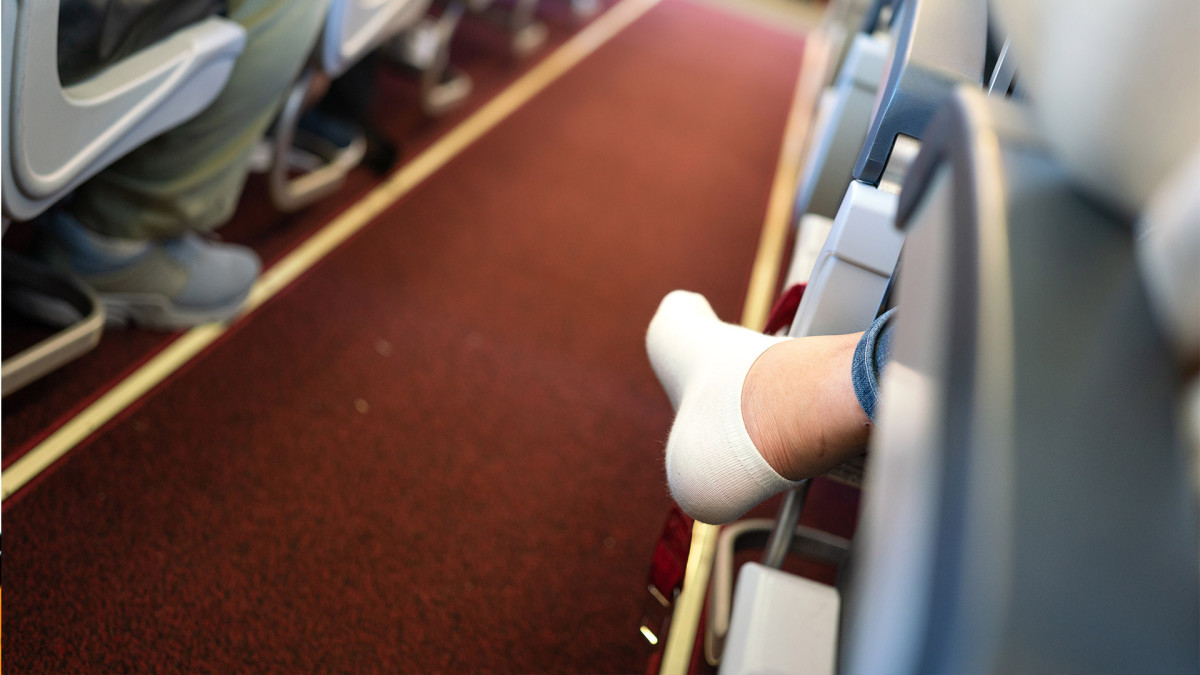
While many fear lack of hygiene in small airplane bathrooms, studies and swab tests repeatedly show that the dirtiest parts of planes are actually not what most people fear.
A combination of frequent contact and their easy-to-miss nature for a cleaner in a rush means that handles and screens are much more likely to be repositories of germs than toilets and floors.
Related: Travelers Largely Fine With These Gross Plane Behaviors, Survey Finds
To conduct a Charm Sciences swab test commonly used by food safety specialists on a flight from Mexico's Cancún to Orlando, Washington Post reporter Andrea Sachs swabbed different parts of the plane for the presence of ATP (an energy source that correlates with the presence of bacteria.)

Shutterstock
You might want to think about wiping down those handles
The results are measured in Relative Light Units (RLU) and, according to Sachs' swabbing, were by far the highest on the sink handle in the plane's bathroom. The metal handle we use to turn the water on and off had a reading of 657,689 RLU while the runner-up, the tray table at the seat, was at 427,147.
More Travel:
- A new travel term is taking over the internet (and reaching airlines and hotels)
- The 10 best airline stocks to buy now
- Airlines see a new kind of traveler at the front of the plane
The report does not reveal the name of the airline in order to not give it bad publicity or draw attention to it as dirtier than others without comparative analysis. Despite the fact that (most) travelers will reach for it with freshly-washed hands, the inside handle of the bathroom was the third-dirtiest swab while the belt buckle on one's seat was number four — likely because the small clasp is frequently-touched but easy to miss when cleaning.
Other dirty areas include the arm rest, the seat pocket and the head rest while the emergency card in Sachs' seat pocket scored lowest out of all the areas she swabbed.
"The armrest was kind of indicative, as was the seat belt, because you've maybe got human skin cells," Meikel Brewster, executive vice president of the company that manufactures the swab test, told the Washington Post. "People put their hand on it to raise it up or down, so I would expect that to have some level of ATP."
'Want to minimize your risk of infection? Do (and don't do) these things
While it's hard to draw wider conclusions about plane cleanliness from one commercially-available swab test, such results can show passengers that areas that look clean may not actually be so — and that germs can lurk in places not commonly thought of as bacteria spreaders.
While a healthy human's body can handle exposure to more germs than is commonly thought, those concerned about cleanliness can bring disinfecting wipes and use them to wipe down the area around their seat before settling in or hold them while opening a bathroom door handle.
"Infectious particles can be spread on an airplane in several ways, such as through inhalation of infectious particles or direct contact with contaminated fluids or surfaces," Stacey Rose, an associate professor of infectious diseases and internal medicine at Baylor College, told The Post. "The risk of infection depends on things like how contagious the organism is; the type of exposure, including how close the traveler was to the source of infection; and the ventilation of the aircraft cabin."







